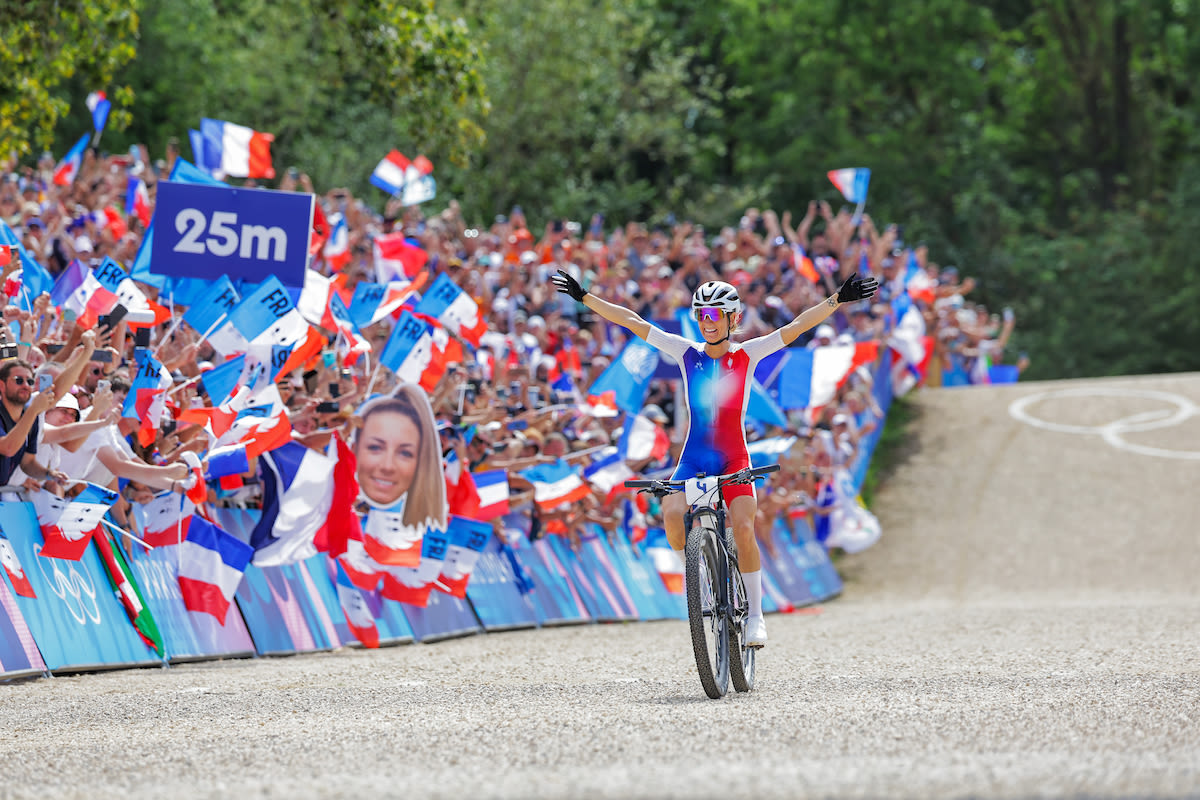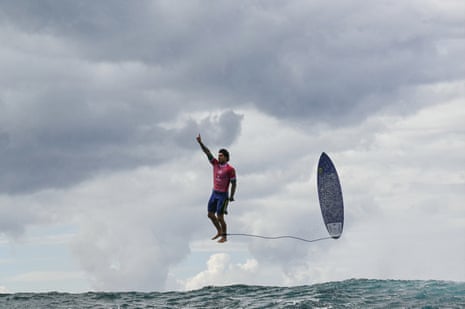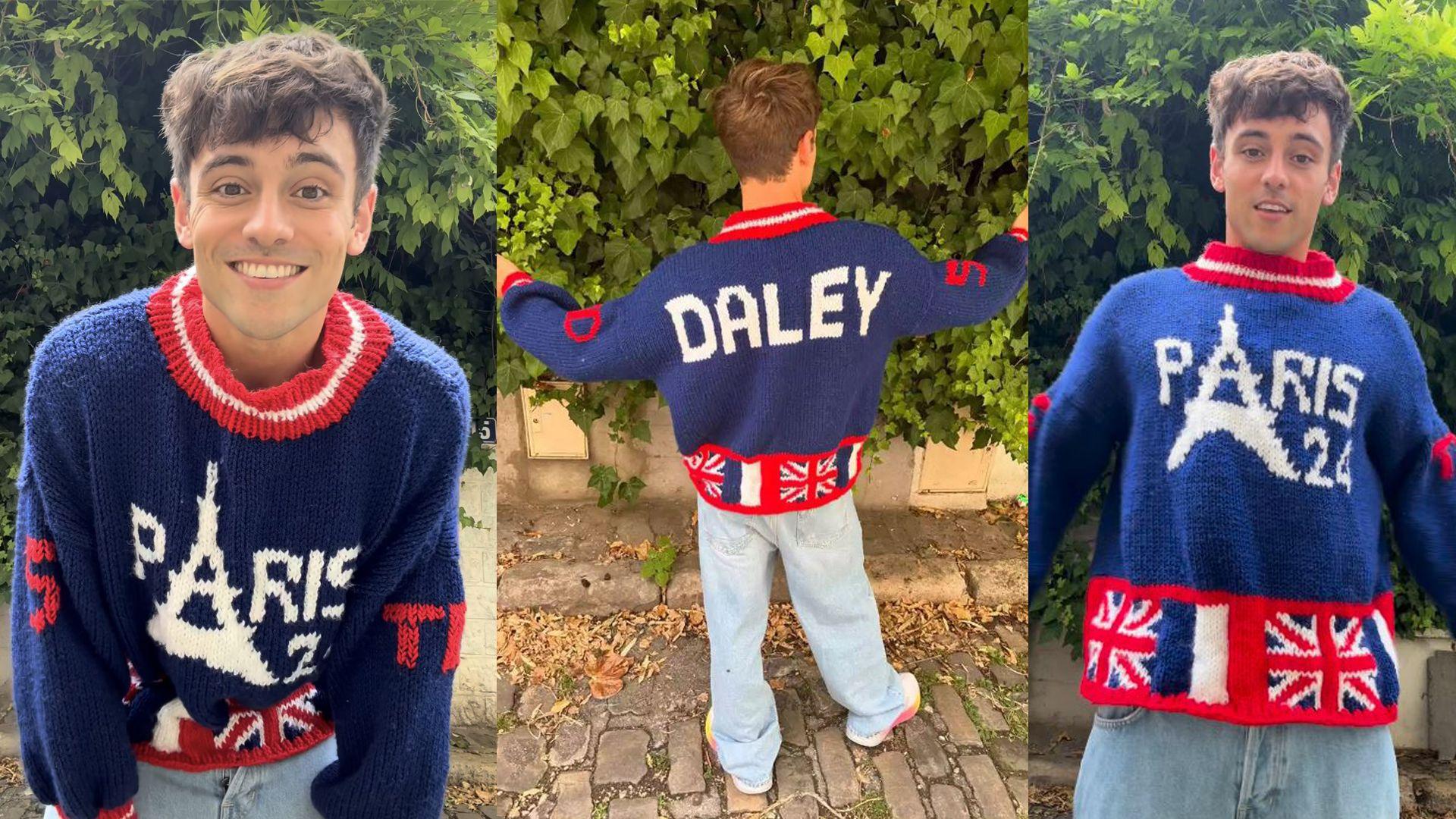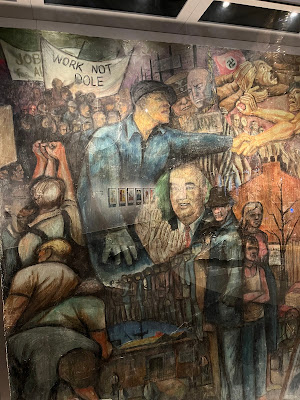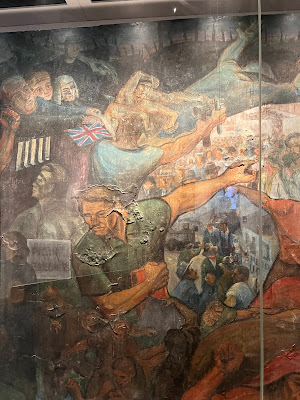- There has been a lot of talk about the mascots. They are called The Phryges, based on the Phrygian cap, which is a symbol of freedom in French history, worn particularly during the French Revolution. They are meant to represent the values of freedom, inclusion, fraternity. To many they are called, the French cap and they look as though they represent a clitoris. I have two things to say: firstly, if it does look like that, it is swollen and inflamed and you need to see a doctor; secondly, why not?
- I don't normally watch tennis at the Olympics as it's not the main event for this sport, and the best athletes aren't necessarily represented (see also football), but I did catch some. Rafa and Novak - smashing balls with tight angles and great force. I definitely don't normally watch doubles (if the players are good, they just seem like exhibition matches, and if they're not, it's dull), but I saw the match between Errani/Paolini and Boulter/Watson in which there were some skilled rapid-fire exchanges, but the Italians were too strong for the Brits. The crowd were fairly engaged, but even more so when the volunteers came on to water the clay court after the game and sprayed them with the hose. It must be getting warm out there. It's also vaguely amusing but mostly tragic to see all the wannabe influencers pouting and posing in the stands and getting their mate to take dozens of photos, which they then examine, reject and make them take more, after a lot more primping, preening and hair-fluffing. You do know it's not actually about you, don't you sweetie?
- The mountain biking: comprising 'fast compacted gravel, a wooden drop-off, and tough rock garden feature', it wasn't a great course, although it was held at Colline d'Elancourt, which is the highest point in the Paris region. The women's race was won convincingly by crowd favourite Pauline Ferrand-Prévot, who pretty much led from the start. Prévot was originally in a group with three others including compatriot Loana Lecomte, winner of the test event on the course held in 2023, but Lecomte crashed heavily on the rock cascade, flipping over her handlebars and landing on her head. She lay unmoving for several minutes before being taken from the course on a stretcher (reports the following day confirmed that while she briefly lost consciousness, she was otherwise 'fine' with some 'facial trauma'). Ferrand-Prévot's was the second gold medal for France (after the men had won the rugby 7's the day before), and it's great to see the home support. Meanwhile Cadel Evans coughed all the way through the commentary; I'm not sure if he's got a cold coming or it's a nervous throat-clearing tic, but it made almost unbearable listening. The men's race the following day was much closer, with Tom Pidcock winning by nine seconds after suffering a 30-second puncture on lap three (of eight). Pidcock's bike handling skills are simply immense, and he broke French hearts by beating their champion, Victor Koretzky into second place. It was extremely nail-biting with an incredible final lap, and I may have screamed at the television a little bit.
- I didn't watch any of it, because it's not a sport in which I have any interest, but the surfing is held in Tahiti, where the athletes are sleeping on a cruise boat - probably a better standard of room than the cardboard bed at the Olympic village. At a distance of 15,800k away, this is the furthest an event has even been held from the host city. Also, the surfing did provide one of the most outstanding photos of the games.
- There are some sports I watch at the Olympics, that I do not watch at any other time. I give you... diving. I love the skill and precision, let alone when they dive in pairs with perfect synchronicity. When the Chinese divers climb out of the pool, they even perform parallel bows to the judges. During the Synchronised 10m Platform (which the Chinese win and in which the British pair - Tom Daley and Noah Williams - take silver), the French duo of Gary Hunt and Lois Szymczak finish substantially last, but they look as though they are having a great time! This seems to be in the spirit of the games and I approve. Also in the spirit of the commentary, at least here in Australia, is having people talk about sports about which they know next to nothing. Mark Taylor (excellent cricketer; dubious diver) is providing the commentary and I love it. He has clearly been handed a cheat sheet with highlighted words such as pikes, rotation, somersaults and reverse tucks, and he makes profound statements like, 'synchronicity is important'. It's entertaining. I do have some concerns over the extremely skimpy outfits that the athletes are made to wear, as do many of them evidently. The divers use chamois between dives so they can dry their legs, all the better to hold onto them tightly in the next pike position (I learned that from Mark). The female athletes all tuck this tiny towel in front of their crotch as soon as they get out of the pool - clearly they don't like the scrutiny of the cameras - and who would? The cameras also like to focus on their tattoos, and it would tough to find a Western athlete without one. May I suggest they avoid scrutiny by covering up in a hand-knitted garment by Tom Daley who sits poolside creating his iconic fashion items.
Friday, 9 August 2024
Friday Five: Early Olympic Ruminations
Wednesday, 7 August 2024
My Newest Favourite Thing: The Wharfies' Mural
One of the most iconic treasures in the Australian National Maritime Museum is the Wharfies’ Mural. It is a window into the cultural movements that occurred among workers on the waterfront during the 20th century, and a reminder of their significant role in broader Australian politics and society.
This mural, an iconic example of Australian working-class cultural expression, originally adorned the canteen walls of the Waterside Workers' Federation building in the busy waterfront of Darling Harbour. Painted in stages mainly between 1953 and 1965, it was a collective effort by nine artists, including waterside labourers, or 'wharfies'.
Though vital to Australia, wharf labouring was hard, dangerous, low-status work. The maritime unions had long fought for improved wages and conditions, and they took a lead role in national campaigns for social justice, minority rights and anti-war activism. This mural celebrates and memorialises that history.
The Waterside Workers' Federation encouraged the cultural and artistic development of its members. With the support of union leader Tom Nelson, artist Rod Shaw and wharfie Sonny Glynn developed a design that could intertwine maritime and labour history. For years wharfies ate their lunch as the artists worked, debating the social and political struggles as they appeared on the wall.
Reflecting the social and political ideals of those involved, the mural for the Waterside Workers' Federation (WWF) canteen was a collective effort. By the 1950s murals were important to left-wing and working-class cultural expression, particularly in communist circles. Rather than elite activities, artistic creation and appreciation were seen as accessible to everyone. Realist art and so-called 'conscious propaganda' were a focus. Producing banners and placards for May Day marches set the creative groundwork for the mural's creation. Mural artist Evelyn Healy for example, first painted banners for May Day in 1938.
Art and politics are often intertwined. The mural examplifies this convergence. Local artists, inspired by Socialist Realism and left-wing thought, formed groups such as the Studio of Realist Art, hoping to take art from a prerogative of a few to a concern of the many. Likewise, progressive film-making, theatre and visual arts in the 1950s sought to depict the seemingly invisible experiences of the working class and make them accessible to all. Created through communal effort and now preserved for future generations, the mural speaks to the wharfies' trials, triumphs and shared cause.
Conversations between the artists, union leaders and wharf labourers guided the struggles and victories that the mural depicted. With the help of wharfie Sonny Glynn, Rod Shaw projected the initial sketches onto the wall and then outlined them in chalk. He then painted over them in oil paint created with pigments from the printery where he worked. Shaw conceived the mural's structure as major themes painted in dark, sepia tones with spaces left for cameos, or small windows, that would be painted in full colour by different artists. He described the effect as 'like a tapestry'.
From those first lines on the wall, the mural eventually wrapped around multiple surfaces in the canteen. It was created in four phases. The first was from 1953 to around 1956 by Rod Shaw with Sonny Glynn, Evelyn Healy, Vi Collings, Harry McDonald and Pat Kelk Graham. The second phase between 1957 and 1960 was painted by Clem Millward and Harry Reade, assisted by Ralph Sawyer. The third phase in the early 1960s saw Sonny Glynn returning to work on the mural with Sawyer. During the final phase after the mural was relocated in several pieces to the new union building, Swayer filled the remaining blank cameo in 1993.
"The ideas for the mural were discussed with a lot of people. Many of us did preliminary sketches for the General Strike of 1917; that's where we started... We got a rough idea and finally Rod put some rough-outs up on the wall." - Artist Vi Collins, 1992
The harsh physical and economic realities of waterside labouring drove the creation of maritime unions in the 1800s - collective effort to ensure safer and more just working conditions. The struggles, aspirations and victories expressed in The Wharfies' Mural reveal a far-reaching trajectory with implications for workers in Australia today. What began as a localised fight on the docks in the 19th century led to ongoing organised agitation for social change. Union support for Aboriginal and Torres Strait Islander justice, women's economic equality, worker's rights, internation solidarity and global peace continues well into the 21st century.
"I believe it is... a very early example of a cooperative work of art. It involved time, a lot of thought, you know, a lot of everything - a lot of heart." - Artist, Clem Millward, 1992
Subscribe to:
Comments (Atom)

